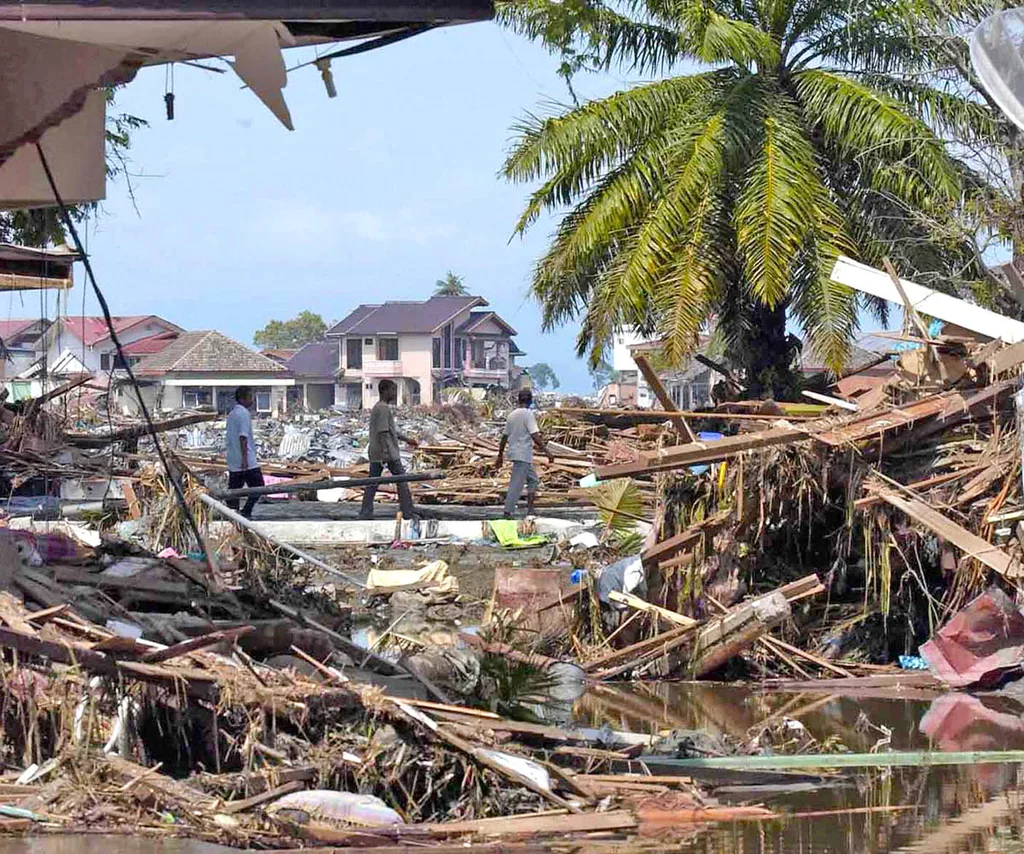Daniel Poole was on a surfing trip to Sri Lanka when disaster struck. A massive 9.1 magnitude earthquake beneath the Indian Ocean triggered a tsunami that would claim the lives of over 200,000 people.
Daniel, now 44, recounts the moment that changed his life forever.
“White Water and Chaos”
“I leapt out of bed to the window and pulled back the old bit of fabric serving as a curtain to see a great wall of white water, as tall as our single-storey building, rolling up over the wave we surfed and then crashing up the beach,” Daniel says, his voice still haunted by the memory.

Daniel and his wife (who can’t swim) were washed away by the wave, with Daniel managing to grab her just in time. The wave smashed through the front wall of their guesthouse, and they were swept out through the rear wall, across a ditch, road, and 150m into the jungle before surfacing again.
The Aftermath
The couple managed to scramble onto a pile of debris that had wrapped around a tree, watching in horror as the jungle became the sea. Within minutes, the water stopped surging, and then it drew back, exposing the sea floor as far as the eye could see. Daniel remembers seeing a bus on its side in a lagoon with people trapped.
In the days that followed, Daniel and other tourists worked together to reach the embassies in Colombo and return to their home countries. It was a difficult journey, made harder by the guilt of leaving behind the chaos and death.
Lessons Learned
Twenty years on, Daniel is now an emergency co-ordinator with disaster-relief charity ShelterBox. He believes that the Boxing Day tsunami had a significant impact on how NGOs and governments deal with disasters. “One of the big lessons was the need for countries to invest in reducing the risk of future disasters, like warning systems,” he says.
Daniel emphasizes that there is no such thing as a ‘natural disaster’. “It’s the way that governments are set up to support people in the aftermath, or if they can prepare in advance and improve systems to make sure people are living in lower-risk environments, that make a difference.”
Another Survivor’s Story
Rachel Harvey, 59, was working as a foreign correspondent in Jakarta, Indonesia, when the earthquake struck. She travelled to Banda Aceh to cover the disaster and was shocked by what she saw. “The first couple of days, we were around the main city – or what was left of it – of Banda Aceh, and that was apocalyptic,” she says.
Rachel joined ShelterBox as a result of her experience covering the impact of the tsunami in Banda Aceh. She believes it’s essential to look back on the event 20 years on to learn from it and improve the efficiency and quality of responses to disasters.
The Importance of Better Co-ordination
Rachel points out that the need for better co-ordination was stark during the tsunami. “The big humanitarian sector can swing into action and, if it’s not careful, subsume everything that existed before – whereas the lesson that is always true of every disaster of whatever type is that it is the people that are impacted by that crisis who are the first responders.”
She emphasizes the importance of including local organisations in disaster responses and listening to the affected communities. With the number of people forcibly displaced around the world now higher than ever, Rachel believes that the lessons learned from the 2004 Boxing Day tsunami are more crucial than ever.

